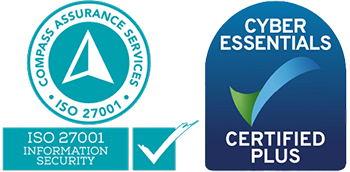The Hidden Cost of Poor Risk Data: How Inaccuracies Undermine Decision-Making
Risk Management is only as effective as the data that informs it. Across industries such as government, mining, transportation, and nuclear energy, decision-makers rely on risk data to assess threats, allocate resources, and implement mitigation strategies. However, when this data is flawed, outdated, or incomplete, it hinders efficiency.
Risk data quality is often overlooked as a strategic priority, yet its impact is profound. If the foundation of Risk Management is unreliable, organisations may be basing critical decisions on misinformation. This blog explores the hidden dangers of poor risk data, the reasons behind its persistence, and the steps organisations can take to improve data integrity.
The Consequences of Poor Risk Data
In high-risk industries, inaccurate or incomplete risk data can lead to severe consequences. In transportation, for example, outdated infrastructure assessments increase the risk of bridge collapses or rail network failures. The nuclear sector is also particularly vulnerable, where even minor errors in risk assessment can have serious safety and regulatory repercussions.
Poor risk data leads to a false sense of security, misallocated resources, and regulatory failures. Decision-makers operating under the assumption that risk data is accurate may ignore underlying vulnerabilities. If an organisation believes its critical infrastructure is stable based on flawed reporting, it may delay necessary maintenance or risk mitigation efforts until a crisis emerges. Additionally, when risk data is inaccurate, resources are often allocated to the wrong areas, leaving genuinely critical risks unaddressed. In industries such as nuclear energy and transportation, non-compliance due to poor data management can lead to legal liabilities and reputational damage.
Why Poor Risk Data Persists
Despite its critical importance, poor risk data remains a persistent challenge. One major issue is fragmented data sources. Risk data is often collected from multiple departments and systems, leading to inconsistencies. When risk assessments are conducted in silos, the broader organisational risk landscape remains unclear. Many organisations also rely on outdated methodologies and legacy systems that fail to capture modern risk complexities. Human error and bias further compound the problem, as data entry mistakes, subjective risk interpretations, and a reluctance to report unfavourable findings all contribute to inaccuracies. Finally, a lack of standardisation in risk assessment criteria makes it difficult to develop a unified approach across an organisation.
Compounding these issues is the failure to leverage emerging technologies for real-time data collection and analysis. While digital transformation has reshaped many operational functions, some organisations still depend on static reports that quickly become obsolete. Without timely updates and accurate modelling, risk assessments remain reactive rather than proactive. The consequences of these inefficiencies are particularly pronounced in industries where safety, regulatory compliance, and operational continuity are paramount.
Improving Risk Data Integrity
To build a more resilient organisation, Risk Managers must take proactive steps to enhance the quality, consistency, and reliability of risk data.
A centralised risk data management approach ensures that all departments operate from a single source of truth, improving visibility and cross-functional collaboration. Real-time risk monitoring reduces reliance on static reports that provide only a snapshot in time. Automated data collection and predictive analytics further minimise errors and enhance responsiveness to emerging threats. Conducting regular data audits helps organisations identify inaccuracies before they lead to poor decision-making. Audits also reinforce a culture of accountability and continuous improvement.
A standardised risk assessment framework ensures consistency in data collection, risk evaluation, and reporting. Adopting recognised frameworks such as ISO 31000 strengthens comparability and reliability. However, improving risk data is not just about systems and processes, it requires cultural change. Risk Managers should advocate for transparency, accuracy, and accountability in all aspects of risk reporting. Encouraging employees to report concerns, validate data inputs, and challenge assumptions creates a more robust risk culture.
Organisations must also invest in training programmes that equip teams with the skills necessary to interpret and utilise risk data effectively. Risk Management is not just about gathering information, it is about deriving actionable insights that drive decision-making. By fostering a data-driven mindset, companies can improve their ability to anticipate risks before they escalate.
Final Thoughts
In high-risk industries, poor risk data is not just an administrative inconvenience, it is a fundamental threat to organisational resilience. When decision-makers base their strategies on flawed information, the consequences can be severe, from regulatory penalties to operational failures and safety incidents.
By prioritising data integrity, centralising risk reporting, and leveraging real-time monitoring, organisations can transform risk data from a vulnerability into a strategic asset. Accurate, timely, and standardised risk data empowers Risk Managers to make informed decisions that protect people, assets, and reputations.
In Risk Management, good decisions start with good data. The question every organisation should be asking is not just how they collect risk data, but how they ensure it is reliable, relevant, and actionable. Only through consistent data validation, cross-functional collaboration, and the use of modern analytics can organisations mitigate risks effectively and safeguard their future.





